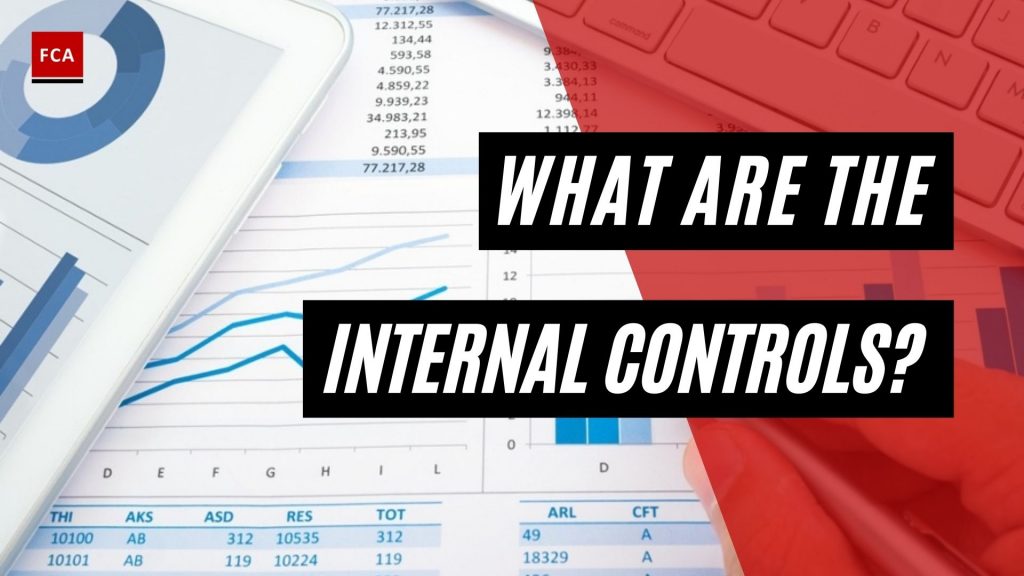What Are Internal controls? The third element of an effective sanctions compliance program is about internal controls. You probably won’t be surprised to learn that it is necessary that an effective sanctions compliance program has internal controls, including policies and procedures, to prevent, detect, escalate and report sanctions compliance program compliance activity.

What Are Internal Controls?
Internal controls are designed to define procedures and processes regarding sanction compliance and minimize the risks identified in your risk assessments. Keep in mind that policies and procedures should be enforced, weaknesses should be identified and remediated, and internal and external audits and assessments of the program should be conducted on a periodic basis. In other words, your compliance program should have the ability to adjust rapidly to changes.
Essentially, internal controls are systematic measures, such as reviews, checks and balances, methods and procedures, instituted by an organization that performs several different functions. These functions include allowing a company to conduct its business in an orderly and efficient manner; to assist an organization in ensuring the accuracy and completeness of its trade sanction information and data; to enable a business to produce reliable and timely management information; and helping an entity to ensure there is adherence to its policies and plans by its employees, applicable third parties and others. Internal controls should be entity-wide.
For sanctions compliance purposes, controls are measures specifically to provide reasonable assurance that any assets or resources of a company are not sold to any prohibited party or shipped out to a designated country.
Components To Implement Effective Internal Controls
To implement effective internal controls, there are seven components that they should meet. They include:
The first component involves written policies and procedures. These policies and procedures should be relevant to the organization, capture your organization’s day-to-day operations and procedures, and are set out in plain language so that everybody can understand them.
The second component is that controls should follow your risk assessment. In other words, your internal controls should prevent, detect, escalate and report compliance activity. This also requires calibration of the controls in a manner that is appropriate to address its risk profile and compliance needs. It is indeed incumbent to consider not only the most obvious risk areas for your internal controls but also the universe of potential transactions within the operations of a company. You should routinely test your controls to ensure effectiveness.
The third component involves testing your controls. The effectiveness and adherence to your policies and procedures should be tested through both internal and external audits. This process should allow you to compare the internal controls current or actual performance to its expected performance to determine whether it is meeting its objectives and using its resources effectively. Moreover, it is a technique that businesses use to determine what steps need to be taken to move from their current state to their desired future state.
The next component is documentation. Ensure that you document your policy, both design, and retention, and adequately document your compliance program. You need to report your findings with the appropriate data and analysis presented, showing the strategic objectives, current standing, deficiencies, and whether the current situation is acceptable. Finally, all your analyses will be backed up with the data gathered during the analysis.
Let’s move on to number five. So, when you learn of a lack of or the existence of a control weakness relating to trade compliance, take immediate and effective action, to the extent possible, to identify and implement controls until the root cause of the weakness can be determined and remediated. If the situation is unacceptable, you should present a course of action for improvement.
As the sixth component, you should clearly communicate your policies and procedures to all relevant staff, including compliance personnel, gatekeepers, and business units operating in high-risk areas and to external parties performing compliance program responsibilities on behalf of your organization.
Component seven relates to having responsible personnel. You must have the personnel to integrate these policies and procedures into the operations of the organization. This includes relevant business units, and you must work to make sure that the employees in any high-risk areas understand your organization’s policies and procedures.
So, as you can see, the internal control requirements from a sanctions perspective have similar elements to an overall compliance program. However, the seven components lay out a good way to think through the design, creation, and implementation of your internal controls around sanctions compliance.
Understanding Internal Controls
Since the early 2000s accounting scandals, internal controls have become a critical business function for every company in the United States. Following their implementation, the Sarbanes-Oxley Act of 2002 was enacted to protect investors from fraudulent accounting practices and to improve the accuracy and reliability of corporate disclosures. By making managers responsible for financial reporting and creating an audit trail, this has had a significant impact on corporate governance. Managers who are found to have failed to properly establish and manage internal controls face serious criminal penalties.
The auditor‘s opinion that comes with financial statements is based on an audit of the procedures and records that were used to create them. External auditors will test a company’s accounting processes and internal controls as part of an audit and provide an opinion on their effectiveness.
Why Are Internal Controls Important?
Internal controls are the mechanisms, rules, and procedures put in place by a company to ensure the accuracy of financial and accounting data, promote accountability, and prevent fraud. Internal controls can help improve operational efficiency by improving the accuracy and timeliness of financial reporting, in addition to complying with laws and regulations and preventing employees from stealing assets or committing fraud.
Final Thoughts
Internal audits assess a company’s internal controls, which include its corporate governance and accounting processes. They ensure that laws and regulations are followed, that financial reporting and data is accurate and timely, and that operational efficiency is maintained by identifying problems and correcting lapses before they are discovered in an external audit. Internal audits are essential in a company’s operations and corporate governance, especially now that the Sarbanes-Oxley Act of 2002 holds managers legally responsible for the accuracy of its financial statements.









